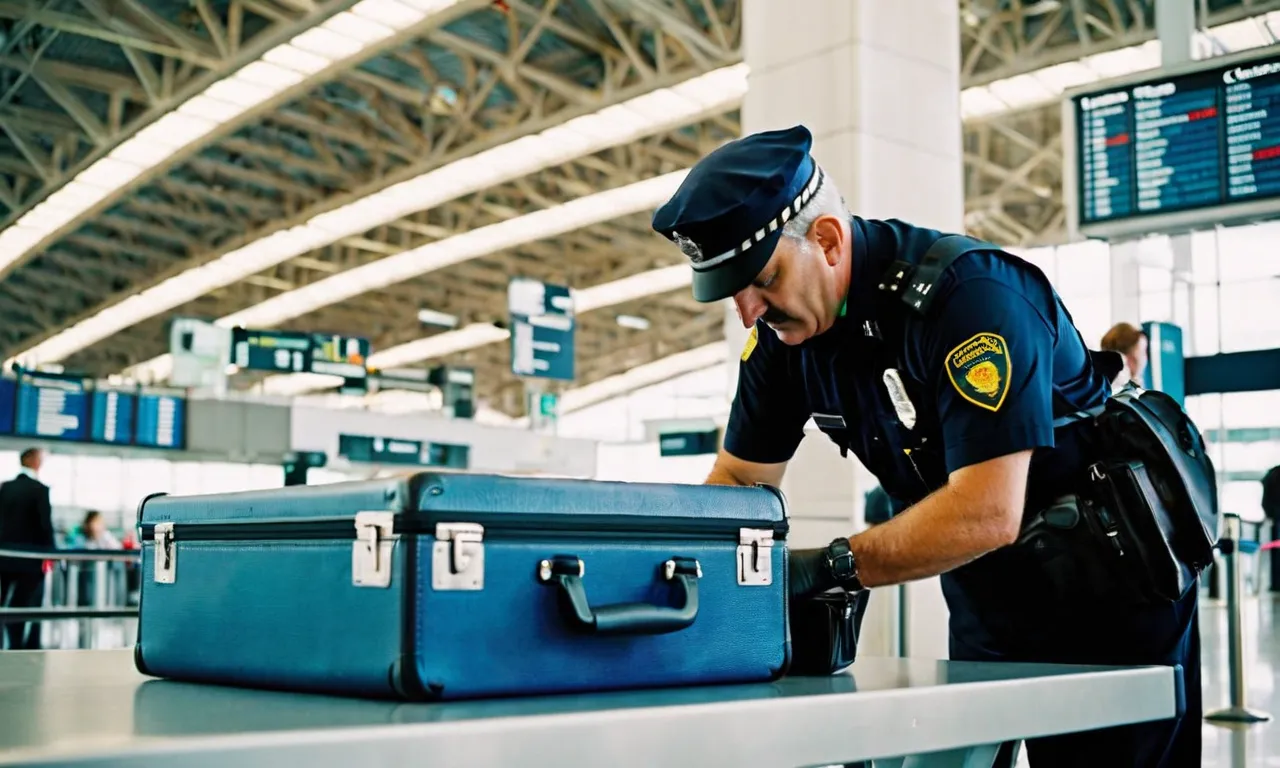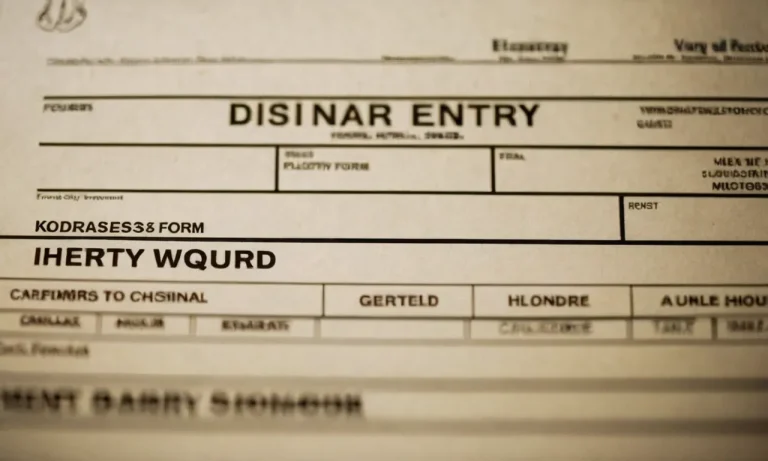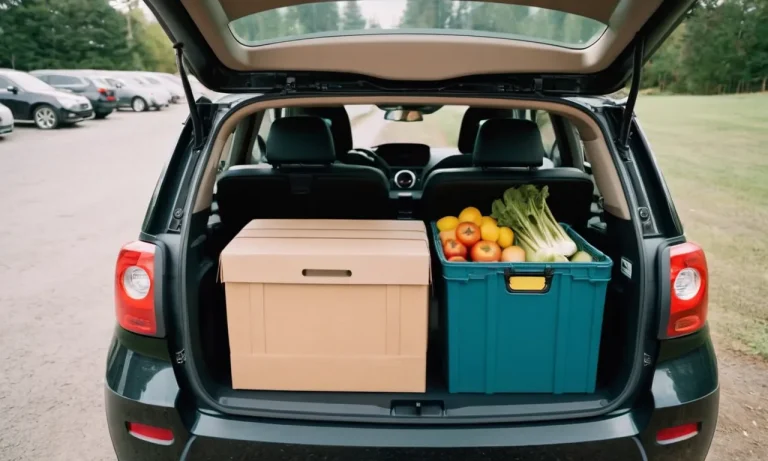How Often Do Checked Bags Get Searched?
If you have ever traveled by air, you may have wondered just how often checked bags get searched by the Transportation Security Administration (TSA). With heightened security measures in place, checks on luggage have become commonplace, leaving some travelers concerned about privacy.
So what are the chances your bag is opened and searched?
If you’re short on time, here’s a quick answer to your question: The vast majority of checked bags are scanned but not physically opened and searched. On average, only around 5% of checked bags trigger further inspection each day.
Behind the Scenes: Where and How Bags Are Screened
When it comes to air travel, the security of passengers and their belongings is of utmost importance. One aspect of this security process involves the screening of checked bags. Let’s take a look at what happens behind the scenes and how bags are screened to ensure safety.
Checked Bags Undergo Advanced Imaging Screening
Most checked bags go through a process known as advanced imaging screening. This involves the use of state-of-the-art technology to create a detailed image of the bag’s contents. The Transportation Security Administration (TSA) utilizes advanced imaging technology to detect potential threats and prohibited items in checked bags.
These imaging machines use a combination of X-ray technology and computer algorithms to analyze the contents of the bag. TSA officers are trained to interpret the images and identify any items that may pose a security risk.
This technology allows for a thorough examination of the bag without the need for physical inspection in most cases.
Did you know? The advanced imaging technology used by the TSA can detect a wide range of items, including weapons, explosives, and even drugs hidden within the bag.
Only a Small Percentage of Bags Get Opened
Contrary to popular belief, the majority of checked bags do not get opened for physical inspection. In fact, only a small percentage of bags undergo this additional step. The TSA has developed a layered approach to security, which includes advanced imaging screening as the primary method for detecting potential threats.
While the exact percentage may vary, it is estimated that less than 5% of checked bags are selected for physical inspection. These inspections are typically conducted when the advanced imaging screening raises a concern or when there is a need for further verification.
It’s important to note that the TSA follows strict guidelines and protocols when conducting physical inspections. The officers are trained to handle the bags with care and ensure that they are returned to their original state after the inspection.
Fun fact: The TSA has implemented various measures to expedite the baggage screening process, such as the use of automated bag screening systems and canine teams trained to detect explosives.
For more information on the TSA’s baggage screening procedures, you can visit their official website here.
Main Reasons a Bag May Get Flagged for Search
When it comes to checked bags, there are a few main reasons why they may get flagged for a search. These reasons include bags being selected at random and suspicious or prohibited items being detected.
Bags Selected at Random
It’s not uncommon for airlines and transportation security agencies to randomly select bags for a thorough search. This is done to ensure the safety and security of all passengers. Random searches help to prevent potential threats or dangerous items from entering the aircraft.
While this may seem inconvenient for travelers, it is an important measure in maintaining the overall safety of air travel.
Suspicious or Prohibited Items Detected
If security personnel detect something suspicious or a prohibited item during the screening process, a bag will be flagged for further inspection. This can include items such as weapons, explosives, or liquids exceeding the allowed limit.
These items pose a potential risk to the safety of passengers and crew members, so it is necessary to thoroughly examine the bag to ensure there are no threats present.
It’s important to note that security personnel are trained to identify potential threats and prohibited items. They utilize advanced screening technology and techniques to detect such items. If a bag is flagged for search due to a suspicious item, it is likely because the screening equipment has detected something that requires further investigation.
If you want to learn more about airport security procedures and why bags may get searched, you can visit the official website of the Transportation Security Administration (TSA) at www.tsa.gov. Their website provides detailed information on the screening process and what is considered prohibited or suspicious items.
If Your Bag Is Searched, Here’s What to Expect
When you’re traveling and your checked bag catches the attention of airport security, you might wonder what happens next. Understanding the process can help alleviate any concerns or frustrations you may have. Here’s what you can expect if your bag is searched.
TSA Will Leave a Notification Inside Your Luggage
After the Transportation Security Administration (TSA) completes a search of your checked bag, they will leave a notification inside. This notification, also known as a “Notification of Baggage Inspection” or “TSA Notice,” informs you that your bag has been inspected.
It typically includes basic information such as the date and time of the inspection, as well as a contact number in case you have any questions or concerns.
It’s important to note that the TSA is legally allowed to inspect checked bags for security reasons. This helps ensure the safety of all passengers and prevent prohibited items from being brought on board.
Any Damage or Missing Items Should Be Reported
If you notice any damage to your bag or if any items are missing after a TSA inspection, it’s crucial to report it immediately. The TSA has a process in place to handle claims for damaged or lost items. You can file a claim with the TSA online or by contacting their customer support.
When filing a claim, make sure to provide detailed information about the damage or missing items, including any receipts or documentation you have. It’s also a good idea to take photos of the damage as evidence.
The TSA will review your claim and may offer compensation for the damages or missing items if they find it to be valid.
Remember, the TSA does its best to handle inspections with care, but sometimes accidents happen. Reporting any issues promptly will help ensure that you receive the appropriate assistance and compensation if necessary.
For more information on TSA inspections and the process of filing a claim, you can visit the official TSA website at www.tsa.gov.
You Can Minimize Chances of a Bag Search with Proper Packing
When traveling, it’s natural to want to avoid any unnecessary delays or inconveniences at the airport. One common concern among travelers is the likelihood of their checked bags being searched by airport security.
While it’s impossible to completely eliminate the possibility of a bag search, there are steps you can take to minimize the chances.
Know What You Can and Cannot Pack
One of the most important factors in avoiding a bag search is knowing what items are allowed in your checked luggage. Familiarize yourself with the Transportation Security Administration (TSA) guidelines regarding prohibited items.
This will help you avoid packing anything that could potentially raise red flags during the screening process. The TSA website (www.tsa.gov) is a great resource for finding detailed information about what you can and cannot pack.
Did you know? Certain items such as firearms, flammable materials, and explosives are strictly prohibited from being packed in both carry-on and checked luggage.
Use TSA-Approved Locks
Using TSA-approved locks on your checked bags can help minimize the chances of a search. These locks are designed in a way that allows airport security to open them for inspection if necessary, without damaging your lock or bag.
Look for locks with the Travel Sentry logo, as these are recognized and accepted by the TSA.
Pro tip: Avoid using non-TSA-approved locks or placing valuables in your checked bags, as this may increase the likelihood of a search.
Pack Smartly and Organized
Another way to minimize the chances of a bag search is to pack your belongings in a smart and organized manner. Keep in mind that airport security personnel are trained to look for anything that appears suspicious or out of the ordinary.
By packing neatly and arranging your items in a logical manner, you can help alleviate any concerns that may arise during the screening process.
Expert tip: Consider using packing cubes or compression bags to keep your belongings organized and easily accessible, while also maximizing the available space in your luggage.
Conclusion
While most fliers will never experience a checked bag search, enhanced security protocols mean screenings do occur. Understanding the reasons bags get flagged and what happens during a search can give travelers useful context.
Properly packing your luggage according to TSA guidelines can also reduce chances of inspection.








